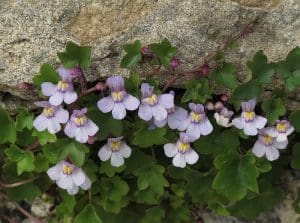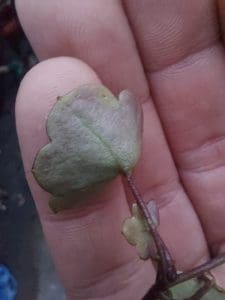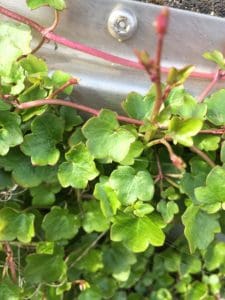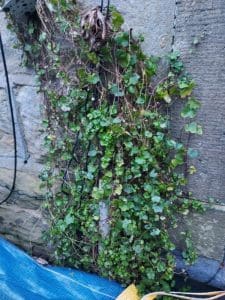Ivy Leaved Toadflax / Spring / Summer / Autumn / Winter / Edible
Ivy Leaved Toadflax is a small trailing plant with creeping stems. Native to the Mediterranean but naturalized across the whole of Europe. It is believed that it arrived in the UK with imported marble sculptures from Italy.
Common Names
Ivy-leaved toadflax, Kenilworth ivy, Creeping Jenny. Mother of Millions, Oxford-weed. Pedlar’s Basket. Pennywort.
Botanical Name
Cymbalaria muralis
Scientific Classification
Kingdom – Plantae
Order – Lamiales
Family – Plantaginaceae
Physical Characteristics for Ivy Leaved Toadflax
Leaves
The leaves as the name suggests look a little like very small Ivy. They are evergreen, rounded to heart-shaped and around 2.5 to 5 cm long. They have 3-7 lobes and grow alternately on thin stems. The backs of the leaves have a reddish tinge.
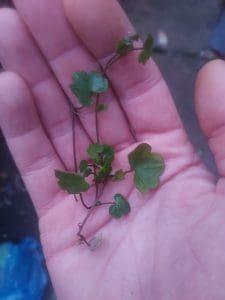
Flowers
The flowers are like small (1-1.5cm) snapdragon flowers with spurs. They have a yellow central patch, with mauve to purple and occasional white colour on the lobes. There are two lobes to the top, and three larger ones on the bottom half of the flower. The flowers are usually held only 2 cm or so away from the wall they grow upon.
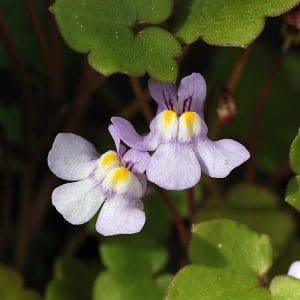
Habitat
It’s quite a common plant in the UK and is normally found on old walls, rocky edges and sometimes shingle beaches. Anywhere rocky really. Quite rare in Scotland.
Known Hazards
None known.
Could be Confused with…
It’s quite a distinctive plant, there’s not too much that you could confuse it with really.
Possibly when it’s younger it could be confused with Ground Ivy which has a hairy leaf, or Trailing Bellflower, which forms denser clumps and lacks the neat, ivy-like lobes on the leaves.
Edible Uses
All parts of the plant are edible, cooked or raw. It has a pleasant flavour similar to Watercress.
Notes on Herbal Uses
It is reported to have been successfully administered in India for diabetes.
Extra notes from the Foragers
One of the reasons why Ivy Leaved Toadflax is so successful in colonising new sites is due to the intelligent way it reproduces. Before fertilisation each flower pushes itself out into the light and sun, standing erect, but when the flowers have been fertilised, it bends downward, buries the capsule in the dark crannies between the stones on which it grows, giving them the perfect environment they need to germinate.




